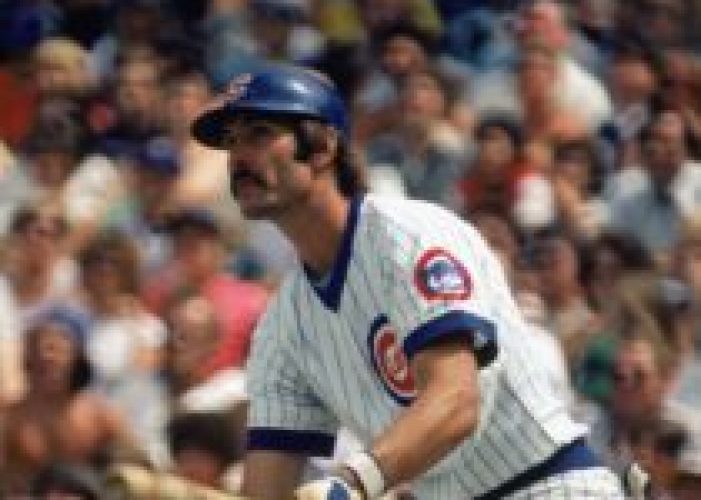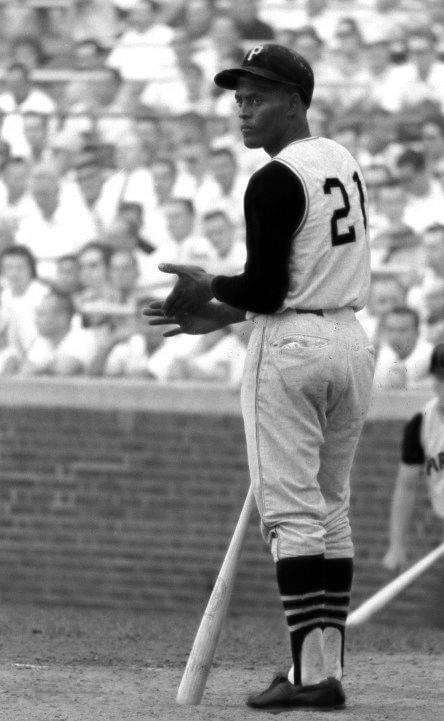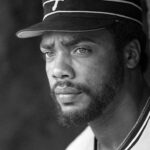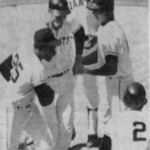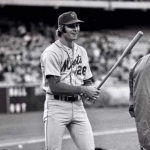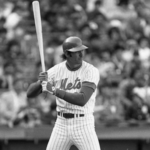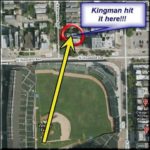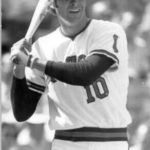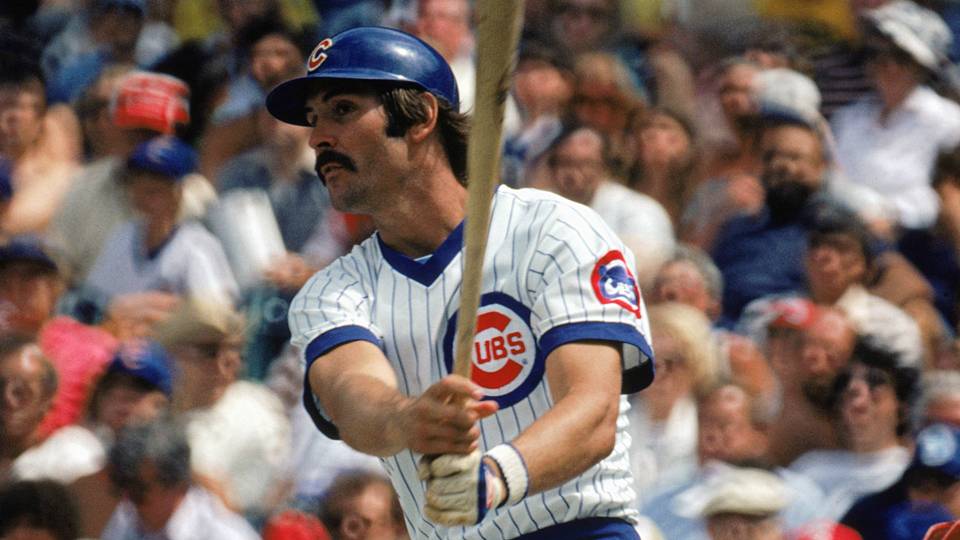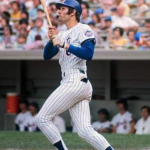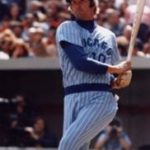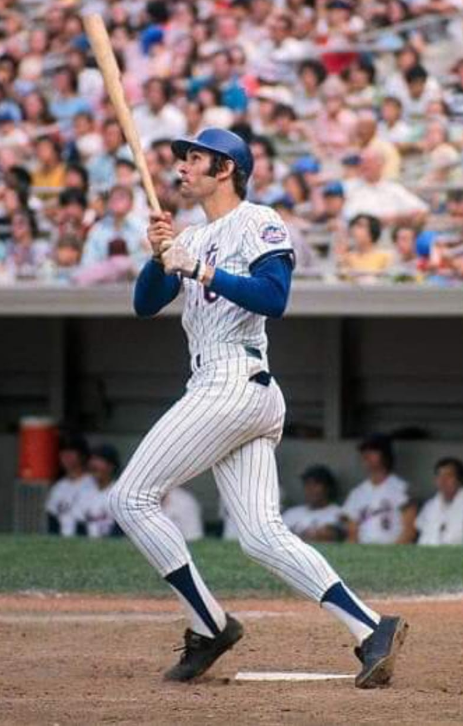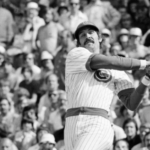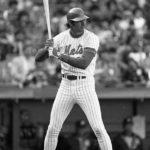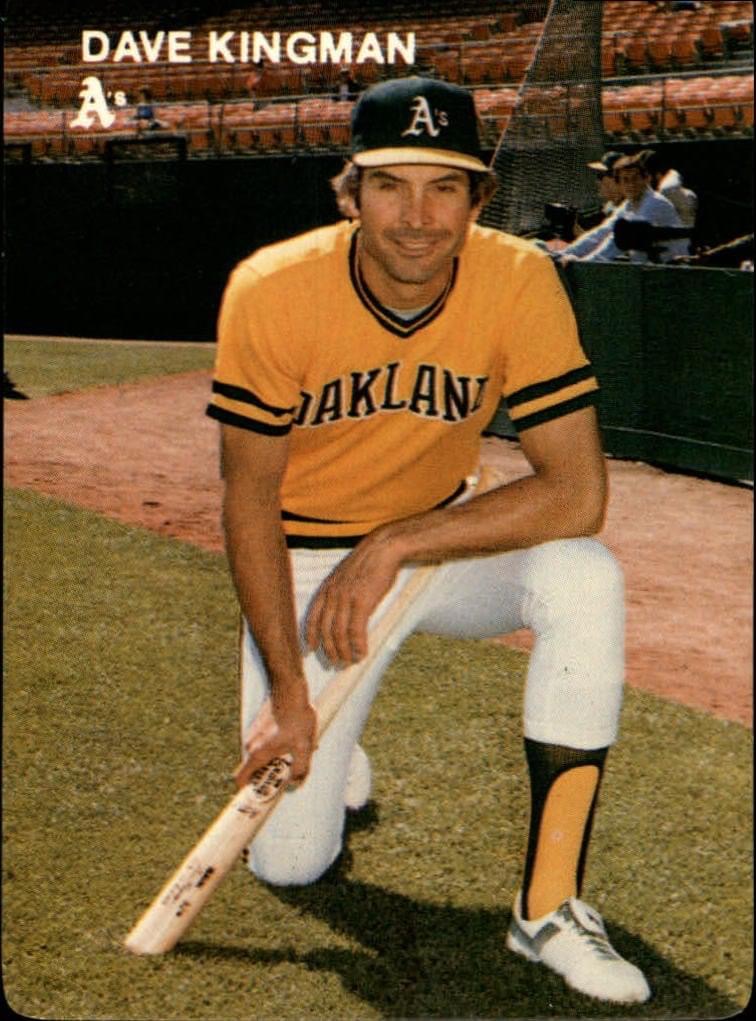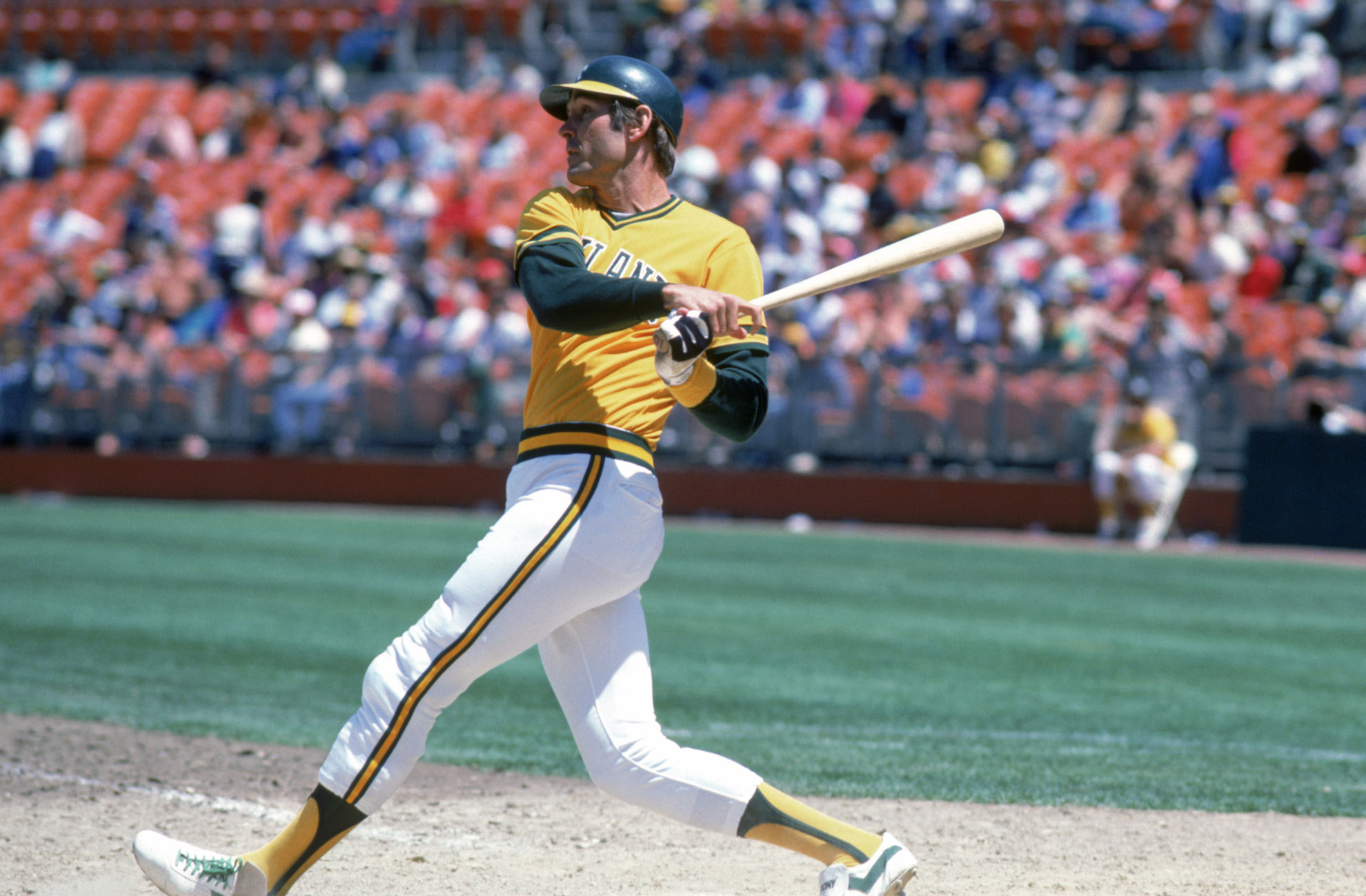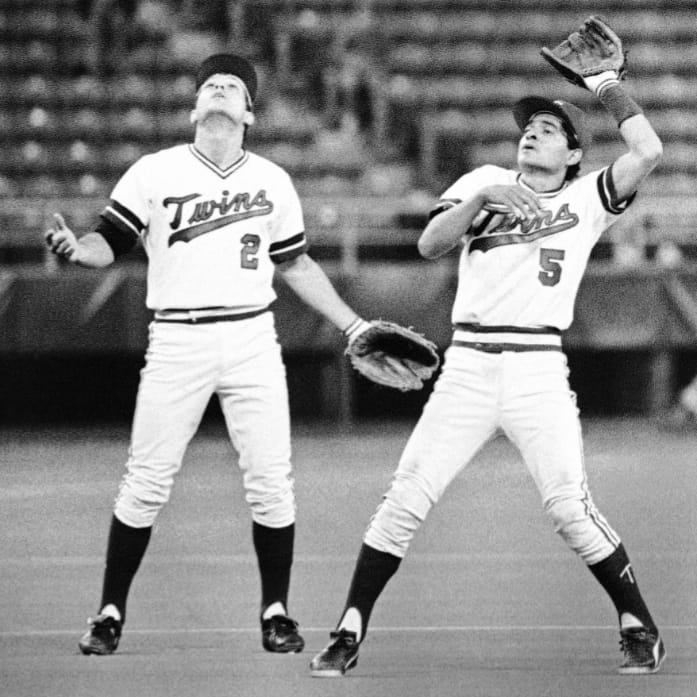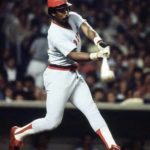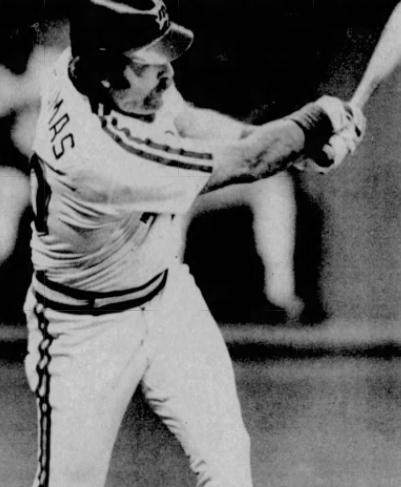Dave Kingman
Positions: Leftfielder, First Baseman and Third Baseman
Bats: Right • Throws: Right
6-6, 210lb (198cm, 95kg)
Born: December 21, 1948 in Pendleton, OR
Draft: Drafted by the California Angels in the 2nd round of the 1967 MLB June Amateur Draft from Prospect HS (Mount Prospect, IL), the Baltimore Orioles in the 1st round (9th) of the 1968 MLB January Draft-Secondary Phase and the San Francisco Giants in the 1st round (1st) of the 1970 MLB June Draft-Secondary Phase from University of Southern California (Los Angeles, CA).
High School: Prospect HS (Mount Prospect, IL)
Schools: William Rainey Harper College (Palatine, IL), University of Southern California (Los Angeles, CA)
Debut: July 30, 1971 (10,770th in MLB history)
vs. PIT 1 AB, 0 H, 0 HR, 0 RBI, 0 SB
Last Game: October 5, 1986
vs. KCR 4 AB, 0 H, 0 HR, 0 RBI, 0 SB
Full Name: David Arthur Kingman
Nicknames: Kong or Sky King
Nine Players Who Debuted in 1971
Chris Speier
Chris Chambliss
Ron Cey
George Hendrick
Dave Kingman
Jon Matlack
Doyle Alexander
Cecil Cooper
Darrell Porter
The Dave Kingman Teammate Team
C: Thurman Munson
1B: Keith Hernandez
2B: Joe Morgan
3B: Carney Lansford
SS: Alfredo Griffin
LF: Dave Winfield
CF: Willie Mays
RF: Jose Canseco
DH: Reggie Jackson
SP: Juan Marichal
SP: Tom Seaver
SP: Nolan Ryan
SP: Ron Guidry
SP: Don Sutton
RP: Sparky Lyle
RP: Rollie Fingers
M: Billy Martin
Notable Events and Chronology for Dave Kingman Career
For his career, Dave Kingman went deep once every 15.1 at-bats, the fifth-best mark in MLB history at the time of his “retirement.” The 6-foot-6-inch, 210-pounder hit 442 long balls, going yard in 25 different parks over parts of 16 big league seasons. Though undoubtedly one of the most exciting and prolific home run hitters of all-time, “King Kong” was equally well-known for his struggles: low batting averages, meager walk totals, and strikeouts galore. At Wrigley Field, however, he could do no wrong. Touted as another Willie Mays in his youth, Kingman did his best to live up to the praise in 1979. That year, the Cubs’ left fielder hit .288 while pacing the circuit in homers (48), slugging percentage (.613), and OPS (.956). All told, Kingman slashed .297/.360/.608 with 69 home runs and 207 RBI in 241 career games on the North Side.
In April 1976, Kingman – then with the Mets – clouted one of the longest home runs in Wrigley Field history. The epic drive traveled an estimated 530-feet over Waveland Avenue, before smashing into the side of a house occupied by Naomi Martinez, who was watching Kingman round the bases on her television. Of course, this was just one of many tape-measure jobs hit by Kingman over the years. He slugged more homers at Shea Stadium (88) than anywhere else, including a 515-foot shot thought to be the longest ever hit in Flushing. At Jack Murphy Stadium in San Diego, “Kong” became just the fourth man to homer into the second deck in left field. With his stunningly unique stats and mercurial personality, it’s only fitting that Kingman hit some of the strangest (and most impressive) “non-homers” in baseball history as well.
Noted for hitting towering fly balls that looked as if they might pierce the heavens, “Sky King” had a tough go of it in domed stadiums. In 1984, he hit a ball that went through a hole in the roof of the Metrodome; it was ruled a double. At Montreal’s Olympic Stadium, Kingman hit a drive that struck the technical ring that surrounded the park on the inside of the roof. It was ruled foul, but without markings on the roof, no one could be sure. (Later, an orange line was painted on the ring, allowing a similar Darryl Strawberry drive to be ruled fair.) In 1985, he hit a ball off a left-field speaker that was caught for an out in Seattle; it would’ve been a 500-plus foot blast in most parks. Kingman couldn’t complain; he hit .291 with 12 homers and 28 RBI in only 19 career games at the Kingdome!
Best Season, 1979
In his first full season with the Cubs, Kingman blasted 48 homers and raised his always anemic batting average to a respectable .288. He drove in 115 runs and scored 97. His .613 slugging percentage was almost 50 points higher than the next closest slugger, Mike Schmidt.
All-Star Selections
Post-Season Appearances
1971 National League Championship Series
Description
Folk singer Steve Goodman wrote a song about Kingman in 1980 that contained this verse:
He’s a home run hero in the national pastime;
And he cannot understand why they won’t leave him alone.
He belongs to the crowd from April to October;
When the season is over, then his time is his own.
Where He Played: Outfield (648 games), first base (603), designated hitter (434), third base (154), pitcher (2).
The Giants loved his bat, but they didn’t have any room for him in their outfield, so they tried to make him an infielder. In 1972-1974, Kingman played 140 games for the Giants at third base, where he committed 44 errors. He wasn’t much better at first base, making 13 errors in 91 games in 1974. The Mets tried the tall, lumbering slugger in left field (in 1975), and right field (1976), before trading the troublemaker in 1977, when he played for four teams in four different divisions. With the Cubs from 1978-1980, he was allowed to play left field, and he enjoyed some of his most productive seasons, though his glove seemed allergic to the baseball, and he made 23 errors in exactly 300 games. The Mets got him back and played him at first, where he was dismal – committing 13 errors in 1981, and an amazing 18 in 1982. Anyone who saw Kingman play first base can easily recall the image of the 6-foot, six-inch giant refusing to bend over to field throws below is knees. He also displayed the range of an anvil. The A’s had the right idea from 1984-1986, using Kingman as a DH almost exclusively. In his final season, in ’86, Kingman played just three games in the field, but still managed to fumble the ball for two errors.
Feats: In 1979, Dave Kingman belted five homers in two games, and also hit three homers in a game twice, tying major league records.
Milestones
At the Kingdome, on August 10, 1985, Kingman belted his 400th career homer, a two-run, first-inning blast off the Mariners’ Matt Young… On April 30, 1982, at Candlestick Park, Kingman collected his 300th home run, off Rich Gale.
Notes
Was named the American League Comeback Player of the Year in 1984.
Transactions
June 4, 1970: Drafted by the San Francisco Giants in the 1st round (1st pick) of the 1970 amateur draft (Secondary Phase); February 28, 1975: Purchased by the New York Mets from the San Francisco Giants; June 15, 1977: Traded by the New York Mets to the San Diego Padres for Bobby Valentine and Paul Siebert; September 6, 1977: Selected off waivers by the California Angels from the San Diego Padres; September 15, 1977: Purchased by the New York Yankees from the California Angels; November 2, 1977: Granted Free Agency; November 30, 1977: Signed as a Free Agent with the Chicago Cubs; February 28, 1981: Traded by the Chicago Cubs to the New York Mets for Steve Henderson and cash; January 30, 1984: Released by the New York Mets; March 29, 1984: Signed as a Free Agent with the Oakland Athletics; November 8, 1984: Granted Free Agency; December 19, 1984: Signed as a Free Agent with the Oakland Athletics; December 20, 1985: Released by the Oakland Athletics; January 20, 1986: Signed as a Free Agent with the Oakland Athletics; November 12, 1986: Granted Free Agency; July 11, 1987: Signed as a Free Agent with the San Francisco Giants.
The Giants sold Kingman to the Mets in March, 1975. Owner Horace Stoneham explained the deal: “He wasn’t happy here and we don’t want him if he doesn’t have a complete desire to be with us.” The Mets gave the Giants $100,000 for the slugger and quickly made sure to clarify his role. “What I saw of him at third.” said Mets skipper Yogi Berra emphatically, “I didn’t like. “But he gives us a pretty good guy on the bench and he’s insurance in the outfield if Cleon Jones can’t do the job.” The Giants had tried unsuccessfully to trade Kingman straight up for Jon Matlack in 1973 but were rebuffed by New York. The Mets were willing to swap Jerry Koosman, but the deal fell through.
Dave Kingman was acquired by the Yankees in 1977 and was not eligible for the post-season. Kingman played eight games for the Yankees. Though he batted just .250, his season average with four clubs was only .221. He had four homers and seven RBI [for the Yanks] with a two-run homer in a 6-5 win over Detroit. The day after purchasing Kingman, the Yankees sold Carlos May to the Angels. This move caused the Yankees to have only 24 eligible players for the 1977 post-season. The Yankees wanted to add Kingman or Dell Alston, but were denied by the league president. — Wayne McElreavy, SABR-L
Feud with Writers
In the late 1970s, Mike Royko, a columnist for the Chicago Sun-Times, became so annoyed with Kingman’s attitude toward reporters, that he publicly announced he was changing his allegiance to the White Sox. When asked why he would abandon the Cubs, a team he rooted for most of his life, Royko snapped, “I’d prefer an owner with a wooden leg (Bill Veeck) to a left fielder with a wooden head.”
Fishing Buddies
When Kingman took relief pitchers Rollie Fingers and Tug McGraw out for a deep-sea fishing excursion, he quipped: “If I pushed these guys overboard, my batting average would improve by 50 points.”
Quotes About Kingman
“I told Yogi that if he plays Dave in 150 games, he’ll hit 30 homers for them, maybe 40. And after he’s playing regularly for a couple of years, he’ll be the next man to hit 60 homers.” — Teammate Bobby Bonds in 1975
Quotes From Kingman
“Everybody’s always talking about my strikeouts. If I played everyday, I could strike out maybe 400 times. I have no idea how many home runs I could hit if I played every day. I’ve never played every day.” — Kingman in 1975
“A ballplayer has to just go out and be mean. You can’t play half-heartedly. If you do, there’s someone right over your shoulder that’ll take your job away. If you don’t do your job, what they’re paying you for, why should they pay you? You just can’t put in eight hours, that’s what a lot of people don’t realize about athletes. Very few people realize the pressure.”
Home Run Facts
Kingman hit 139 homers as a left fielder, 122 as a first baseman, and 101 as a DH. He joins Harmon Killebrew and Stan Musial as one of three players to hit at least 100 HR at three different positions. Source: David Vincent.
All-Star Selections
1976 NL
1979 NL
1980 NL
Replaced
Willie McCovey, at first base for the Giants. At first, in 1972-1974, the two platooned, but in 1974, Kingman was essentially the starter.
Replaced By
Reggie Jackson, as DH for Oakland, in 1987.
Best Strength as a Player
Raw power
Largest Weakness as a Player
Attitude
Other Resources & Links

